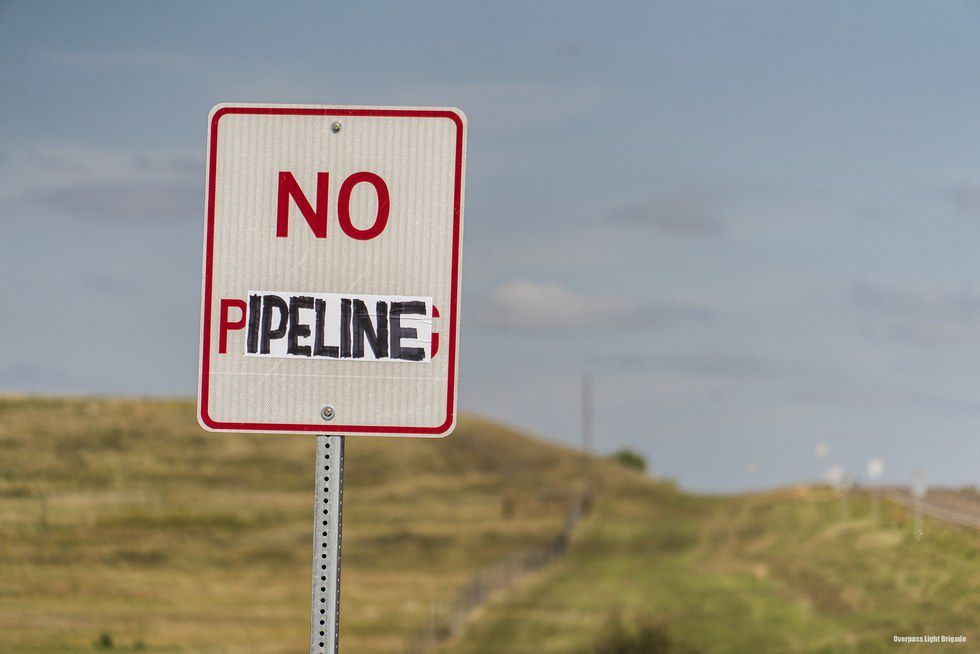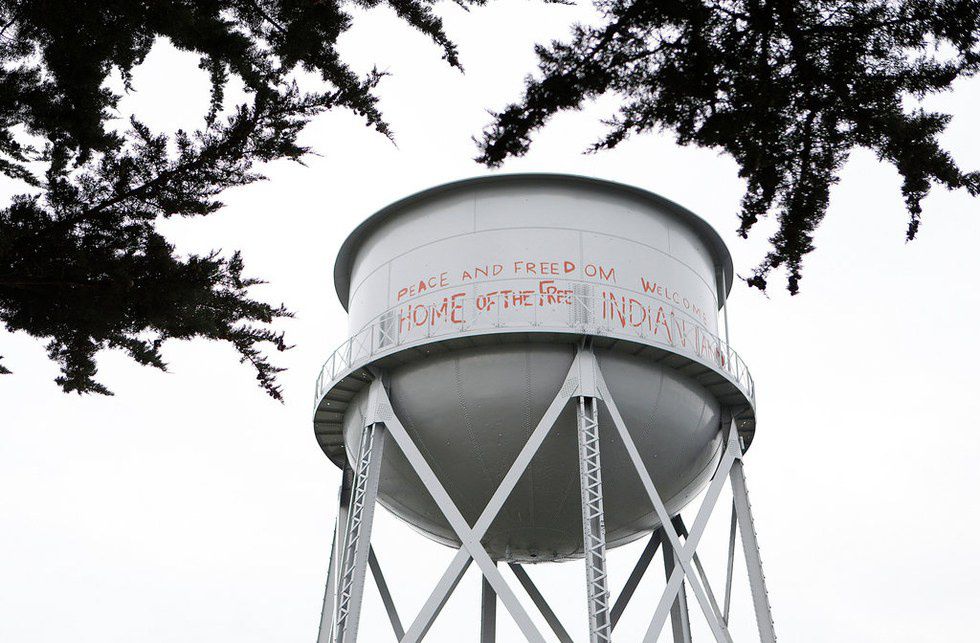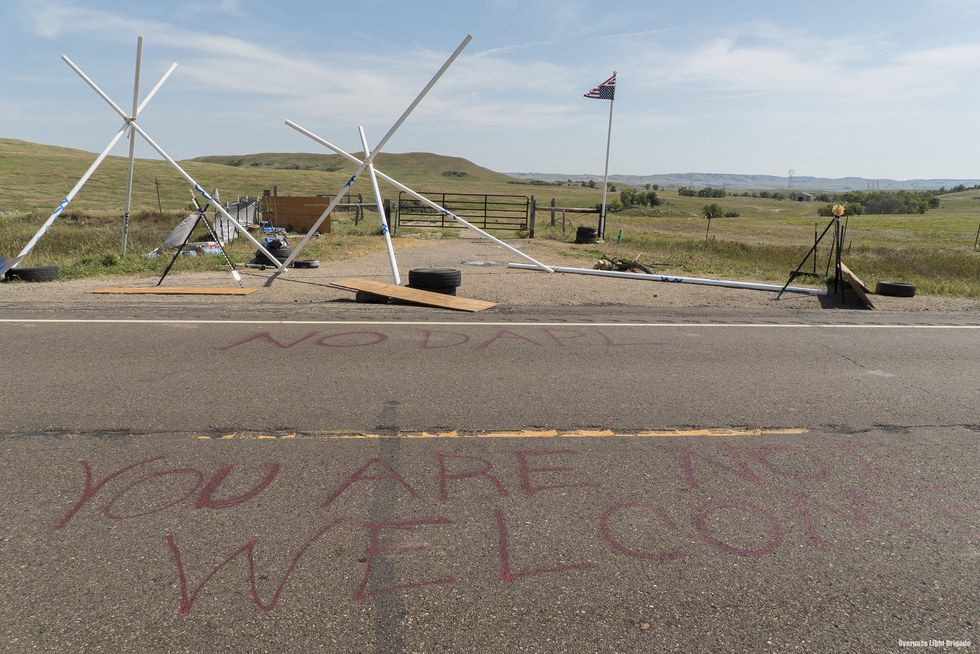In a video released earlier this month, Green party presidential candidate Jill Stein can be seen spray-painting the words I approve this message on the blade of a bulldozer at a Dakota Access Pipeline construction site in Morton County, North Dakota. Although Stein and her running mate Ajamu Baraka are two of the more recognizable public figures charged for their involvement in the DAPL protest, they are certainly not the first to use graffiti to challenge the U.S.'s commodifying of Native American land.

While Stein opted for the Stand by Your Ad provision which both points to her campaign and sanctions her voice in the protest run largely by the Standing Rock Sioux tribe, Baraka scrawled in bold green letters "Decolonization". Although seemingly out of place among the political tagline and what has now become the protest's slogan, "Water is life", Baraka's message echoes an emotion felt by Native American activists across the country.
When the activist group "Indians of All Tribes" occupied Alcatraz in 1968, they too left graffiti behind. Their words-- painted and scraped onto the buildings of the island's abandoned prison, visually declared their reclamation of native land. Their occupation would end in 1971 with the IAT's removal by federal marshals. But the wind-whipped island still bears memories of the group's nineteen-months-long residency there. Perhaps most noteworthy is the bold red letters reading “Peace and Freedom. Welcome. Home of the Free Indian Land.” traced on the prison's newly restored water tower.
Today, a similar message can be seen scattered across DAPL construction sites in North Dakota. Unlike their San Franciscan predecessors, Dakota Access protestors extend no courtesy in their demands. One sign spray painted in front of the gate of a construction access road reads "No DAPL. You are not welcome." With the company's recent desecration of sacred burial sites, there's indeed little to be glad about the pipeline's construction, which protestors see as a threat to the cultural history of the Standing Rock Sioux tribe and the environment. "How do you eliminate a race?" Dave Archambault, chairman of the SRS Tribal Council asked, "That's what the government has been trying to do for 200 years. But we're still here. We have maintained our culture . . . our way of life. We're still here." It's this determination that's recited in the graffiti painted and hung on equipment, barricades and road signs across DAPL construction sites.
The IAT's graffiti still covers the walls of Alcatraz's prison-- the antigovernment slogans now preserved as memories of revolution. Those at Standing Rock, however, are being treated by the county as acts of vandalism.













































